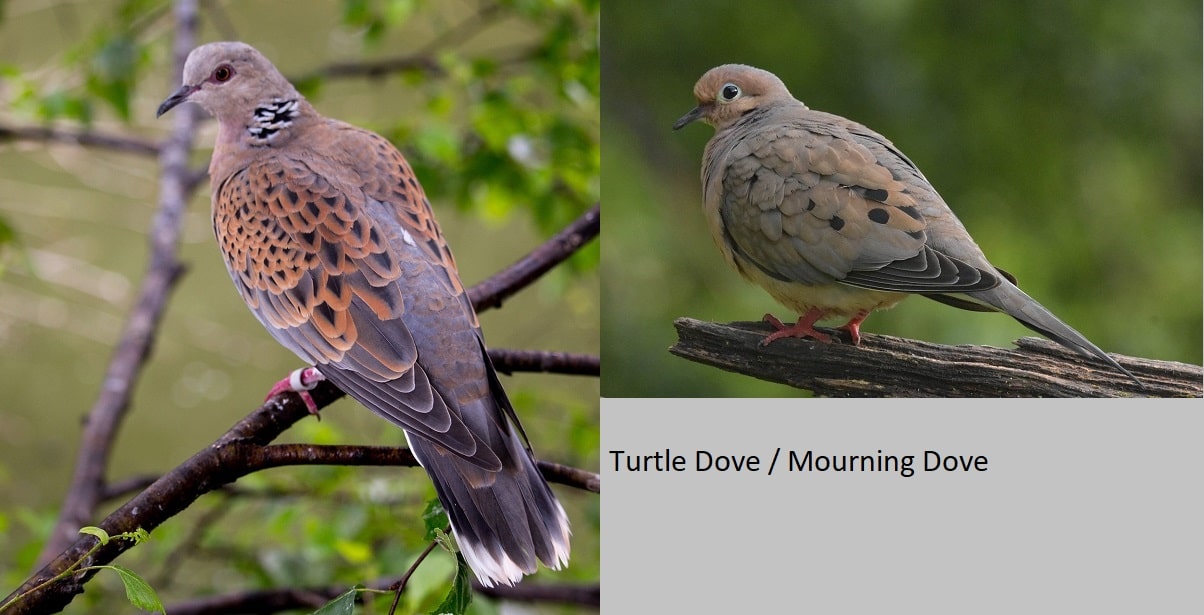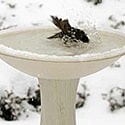Turtle Doves vs. Mourning Doves: Are They The Same Bird?
Turtle doves (Streptopelia turtur) and mourning doves (Zenaida macroura) are two bird species that many people often confuse.

Despite their similar appearance and cooing calls, they are not the same species of doves.
Turtle doves and mourning doves both belong to the family Columbidae, but they are different species with distinct characteristics.
Turtle doves are smaller than mourning doves and have a distinctive black and white stripe on the side of their necks.
They are migratory birds that breed in Europe and winter in Africa. In contrast, mourning doves are larger with a plump body and a long, pointed tail.
They are resident birds that can be found throughout most of North America.
Despite their differences, turtle doves and mourning doves share some similarities.
For instance, both species are known for their gentle cooing calls, which are often heard in the early morning and late afternoon.
They are also both seed-eating birds, feeding on a variety of seeds, grains, and fruits.
Physical Characteristics
This section will explore the key differences and similarities between the two species in terms of their size, color, and wings.
Size and Weight
Turtle doves are generally smaller than mourning doves, with an average length of 9 inches and a weight of around 4 ounces.
In contrast, mourning doves are larger, with an average length of 12 inches and a weight of around 6 ounces.
The image above shows a closeup of the Turtle dove making it look larger than it is but is good for coloration.
 Heated Pedestal Baths |
 Heated Ground Bath |
 Heated Deck Mounted |
 Scallaped Deck Mounted |
Color and Appearance
Turtle doves have a soft brownish-grey plumage with a distinctive black collar stripe on their necks.
They also have a diamond-shaped wing pattern and pointed tail feathers.
In contrast, mourning doves have a brownish to shiny tan plumage with warm cinnamon wings.
They also have black dots on their wings and a single black spot behind and below the eyes and a white and black collar stripe.
Wings and Flight
Both species have wings that are adapted for flight, but there are some differences in their shape and size.
Turtle doves have shorter wings with a wingspan of around 17 inches, while mourning doves have longer wings with a wingspan of around 18 inches.
This difference in wing size affects the way they fly, with turtle doves being more agile and maneuverable in flight compared to mourning doves.
Habitat and Distribution
One of the most significant ways Turtle doves and Mourning doves differ is between their habitat and distribution.
Geographical Range
Turtle doves are native to Europe, Africa, and Asia. They can be found in a wide range of habitats, including woodlands, grasslands, and open and semi-open environments.
They are also known to migrate long distances, with some individuals traveling as far as the Middle East, North Africa, and even Bermuda.
Mourning doves, on the other hand, are native to North America, and their range extends from southern Canada to Panama.
They are most commonly found in suburban areas, but they can also be seen in woodlands, grasslands, and open environments.
Mourning Doves also nest around humans, often using hanging plants as nest sites.






